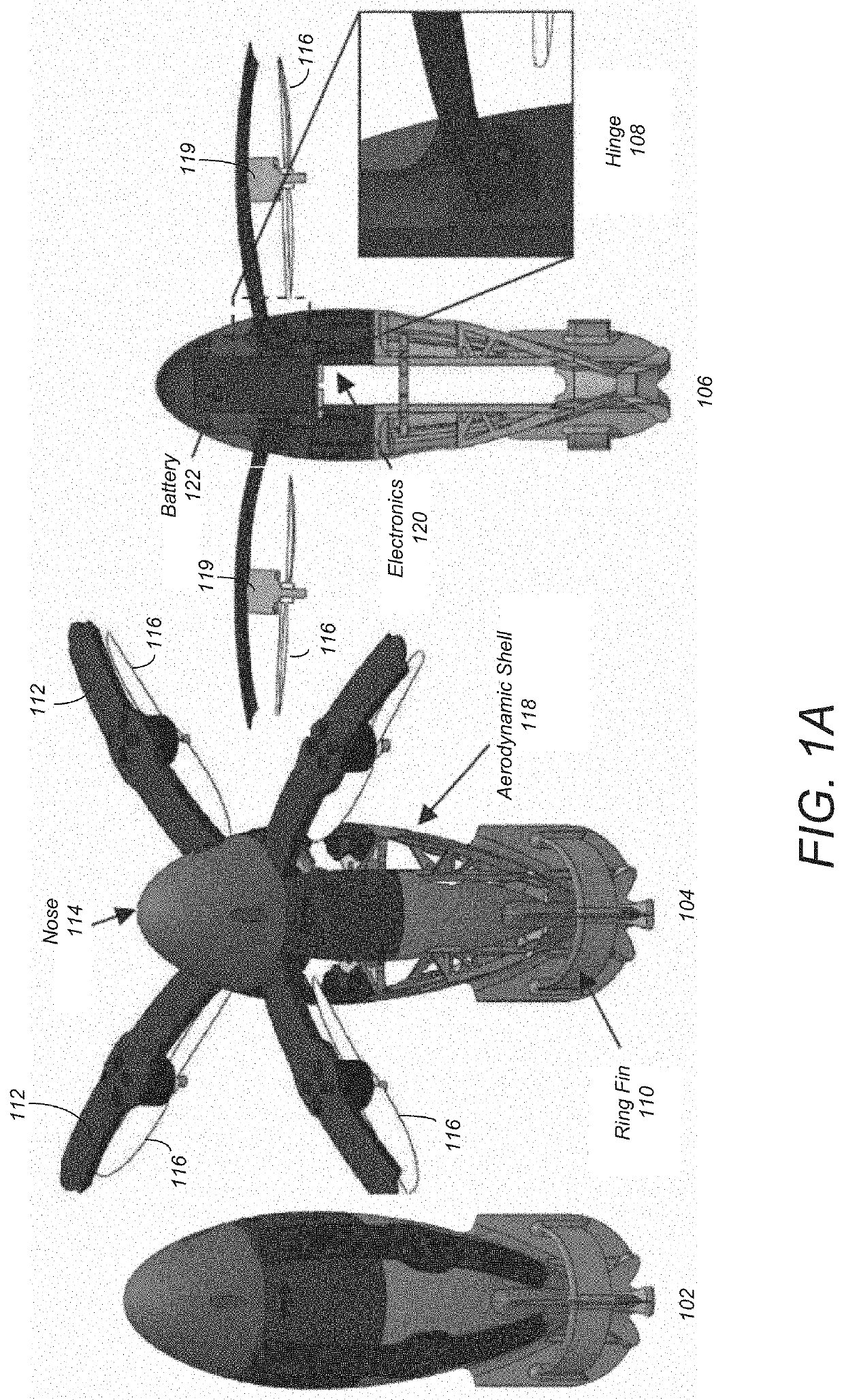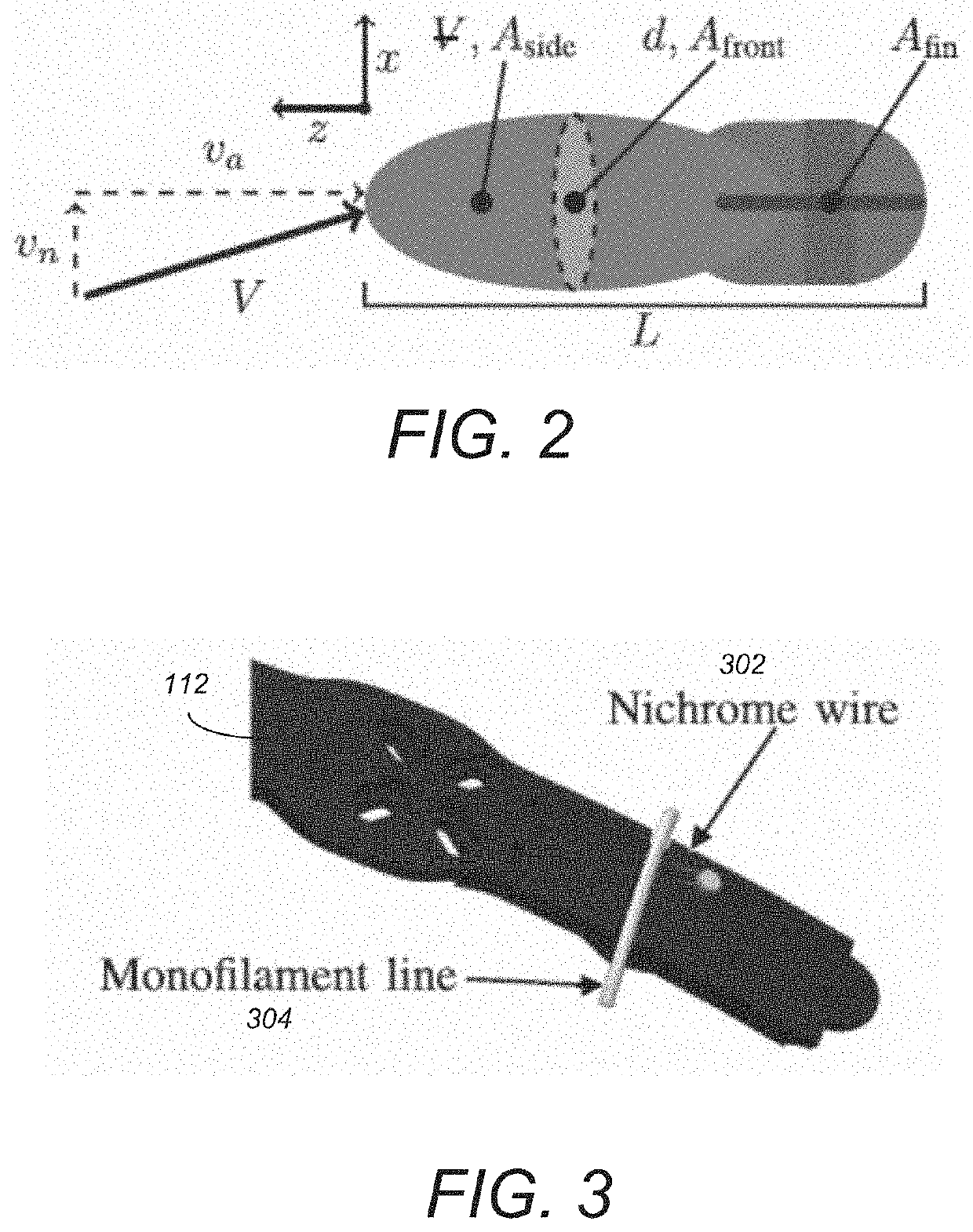Passive and active stability systems for ballistically launched multirotors
a multi-rotor and stability system technology, applied in the field of small unmanned vehicles (uavs), can solve the problems of inability to conventionally launch aircraft to gather this information, the blades of the multi-rotor are a hazard to nearby personnel, and the takeoff is one of the most dangerous parts of the flight of the multi-rotor, so as to facilitate handoff control and easy to see the ground
- Summary
- Abstract
- Description
- Claims
- Application Information
AI Technical Summary
Benefits of technology
Problems solved by technology
Method used
Image
Examples
embodiment one (
Vehicle Embodiment One (1)
[0040]Design
[0041]Requirements for the first design option may include: (a) it will be launched from an approximately 3 inch tube (70-85 mm) (although different size tubes and / or no tube may be utilized); (b) it should fly ballistically to reach an altitude of 10 m; (c) it should be able stabilize its flight after launch. In addition, (d) it should be a multirotor, and (e) it should be able to carry a payload of 200 g.
[0042]From this set of requirements, one can derive functional requirements that help the design process: the first requirement sets a form factor and, combined with requirement (d), requires that the vehicle be able to deploy its arms that hold the rotors. Requirement (a) also implies high vertical loads during launch, which will drive the structural design. Requirement (e) does not constrain the design space, as the vehicle is more volume limited than thrust limited.
[0043]This design focuses on the new challenges compared to a standard multi...
embodiment two (
Vehicle Embodiment Two (2)
[0083]Embodiment 1 above describes a small prototype, a folding quadrotor that launches from a 3-inch tube to a height of 10 m or more, and then passively unfolds to a fully functional multirotor when triggered by a nichrome burn wire release mechanism. Such embodiments introduce the basic aerodynamic principles and structural design concepts required to sustain the g-forces associated with a ballistic launch. A prototype was fabricated and ballistically launched from a vehicle moving at speeds of 80 km / h (22 m / s). However, the multirotor was stabilized by a remote pilot after the ballistic launch phase.
[0084]Embodiment 2 provides a larger prototype that can launch from a 6 inch-diameter tube, propelled by expanding CO2. Embodiment 2 also demonstrates autonomous self-stabilization after the ballistic phase. Moreover, embodiment 2 demonstrates that the vehicle can carry a significant sensor payload (illustrating that ballistically launched multirotors can ca...
PUM
 Login to View More
Login to View More Abstract
Description
Claims
Application Information
 Login to View More
Login to View More - R&D
- Intellectual Property
- Life Sciences
- Materials
- Tech Scout
- Unparalleled Data Quality
- Higher Quality Content
- 60% Fewer Hallucinations
Browse by: Latest US Patents, China's latest patents, Technical Efficacy Thesaurus, Application Domain, Technology Topic, Popular Technical Reports.
© 2025 PatSnap. All rights reserved.Legal|Privacy policy|Modern Slavery Act Transparency Statement|Sitemap|About US| Contact US: help@patsnap.com



